Building a differentiation & personalization toolkit
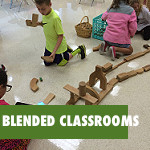 I was privileged recently to work with a number of pre-service teachers here at the University of Vermont. All were eager to gain access to tools and resources to help them respond to the variety of learners’ needs they will face in classrooms.
I was privileged recently to work with a number of pre-service teachers here at the University of Vermont. All were eager to gain access to tools and resources to help them respond to the variety of learners’ needs they will face in classrooms.
Using the Civil War as our (broad) topic, we developed a workflow for creating a tech-rich social studies unit responsive to different learners’ needs. And using ourselves as learners, we tested out our methods.
Why differentiation?
A key element in proficiency-based learning design is creating learning environments where students receive timely, differentiated support based on their individual learning needs.
In The Learning Edge: Supporting Student Success in a Competency-Based Learning Environment Shubilla and Sturgis make this important point about creating systems of support that eradicate rather than replicate current inequalities:
It is essential to pause and understand the importance of timely, differentiated support. Our commitment to prepare all of our young people for college and careers demands that we be intentional in designing schools to effectively meet the needs of students of all races, classes, and cultures.
It also demands our vigilance in challenging inequity. There is a risk in competency education — a risk that learning at one’s own pace could become the new achievement gap and that learning anywhere/anytime could become the new opportunity gap.
When teachers have ready access to rich, multi-modal learning resources, they can respond to individual needs as students progress toward proficiency.
Building the toolkit
- Find out what learners know by using formative assessment tools;
- Locate a variety of resources to respond to that range of knowledge;
- Deliver these resources in a way that allows learners to choose their path and pace, building on their knowledge and understanding.
Today let’s look at the first two tasks on our list: finding out what learners know, and assembling resources to respond to their knowledge.
1. Find out what learners know by using formative assessment
What strategy can double student learning gains? According to 250 empirical studies, the answer is formative assessment, defined by Bill Younglove as “the frequent, interactive checking of student progress and understanding in order to identify learning needs and adjust teaching appropriately.”
How we tackled formative assessment
Before I launched into a number of digital apps for formative assessment, I created a group chatroom in Todays Meet to encourage informal text exchanges as the workshop progressed. The goals: to hear the voices of all the experts in the room. To uncover what resonated for the learners, what questions they had, and what they could contribute to the conversation.
In addition, I introduced this scale created by Bill Rich of Red House Learning:
The learning progression outlined above served as a self-assessment tool for these pre-service teachers. They clarified their current needs and future progression, and used it to provide me with formative feedback.
Let the (formative assessment) games begin…
The warm-up activity included a raucous competition unpacking recall questions about the Civil War using a Kahoot. What a fun way for learners to be reminded of what they know, become curious about what they don’t, and engage with their peers. I modeled searching for and duplicating a review game created by other educators (three cheers for efficiency) in the Find Kahoots section of the website.
Go deeper: To learn more about Kahoot and how to use it for formative feedback, check out this video tutorial from Jason Cross:
From competition to collaboration
After Kahoot we did a similar activity using Socrative, an app that allows you to easily poll your students and share the results live. Sharing the data invites students to work with you to make meaning of the results.
But instead of individuals responding, we used Socrative’s Space Race function to create a collaborative team Civil War quiz! With Socrative, the teacher is not limited to simple recall questions. Learners can display increasingly deep knowledge. Teams can use any tools at the ready to help answer the question. These encourage collaborative competition and reflection.
Go deeper: To learn more about Socrative and how to use it for formative feedback, check out this video tutorial from Edshelf:

2. Locate a variety of resources to respond to your learners’ range of knowledge
Once it’s clear there’s a range of prior knowledge gaps and curiosities, you need easy and efficient ways to find resources. These can be on a variety of different reading levels and media types.
Gather resources with Newsela:
Look at some news articles available in Newsela. Notice the lexile bar located to the right of the article. A reader can change the complexity of the vocabulary and sentence structure by moving up or down on the lexile range based on his or her reading needs.
Gather resources with advanced Google searches:
Instead of limiting your search to websites, use an advanced Google search that collects resources in a variety of formats. With an advanced search, you can gather resources in such other formats as PowerPoints, Flash-based simulations, Google Earth files, audio files (let’s hear it for podcasts!), pdfs or videos.
Click here to see the steps in the advanced search process.
Gather Open Educational Resources (OERs):
The explosion of access to rich resources organized by theme, topic, discipline, standard, and grade level is one of the best kept secrets out there. The pre-service teachers I worked with were aware of Khan Academy for math progression practice:
But most were unaware of the humanities resources Khan Academy offers as well.
Open educational resources like Gooru, Curriki, and OER Commons provide a wealth of teaching and learning resources. In addition, they’re easily accessed, allowing you to respond to learners’ ongoing and ever-shifting needs.
Gather resources by tapping into curators:
I demonstrated a Civil War search to find Webquests and Scoop.it collections. Simply type into a Google search your topic along with the terms webquest or scoop.it and steal away. For an example, see this American Civil War Scoop.it
And then…
3. Deliver these resources in a way that allows learners to choose their path and pace, building on their knowledge and understanding.
In my next post, we’ll look at how to deliver responsive resources in a way that allows learners to choose their path and pace, building on their knowledge and understanding. That’s where personalization happens.
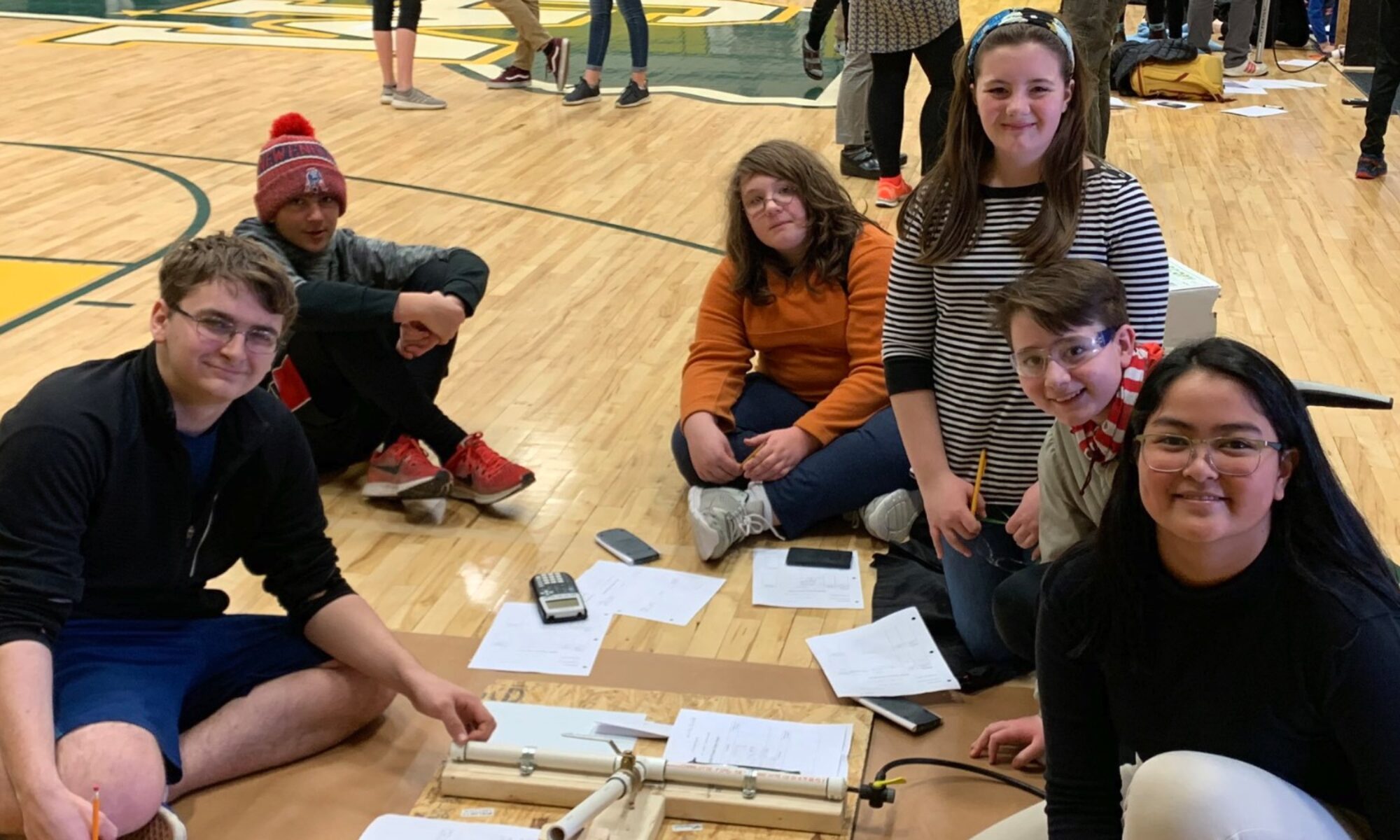


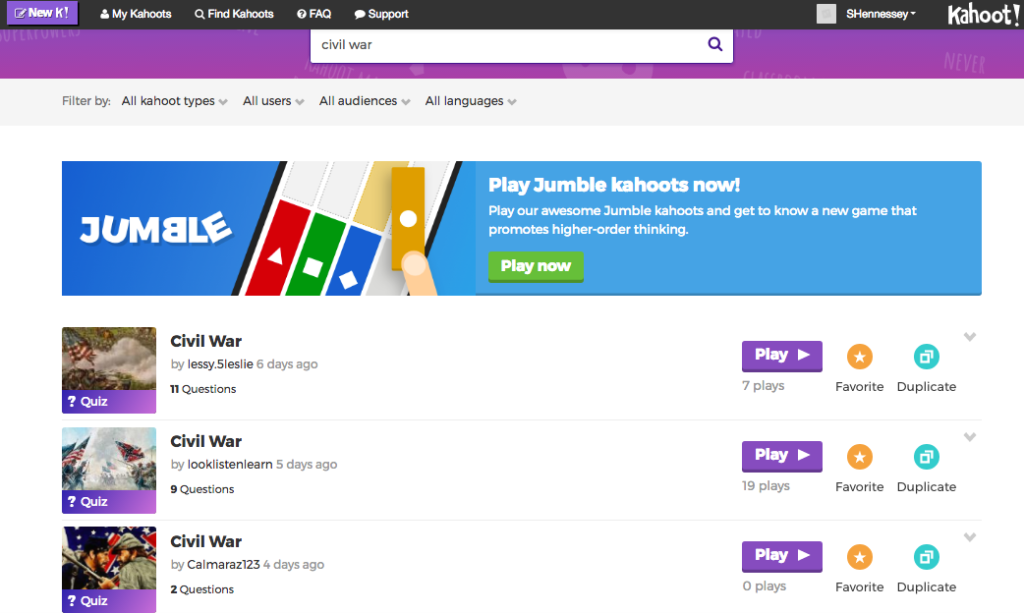
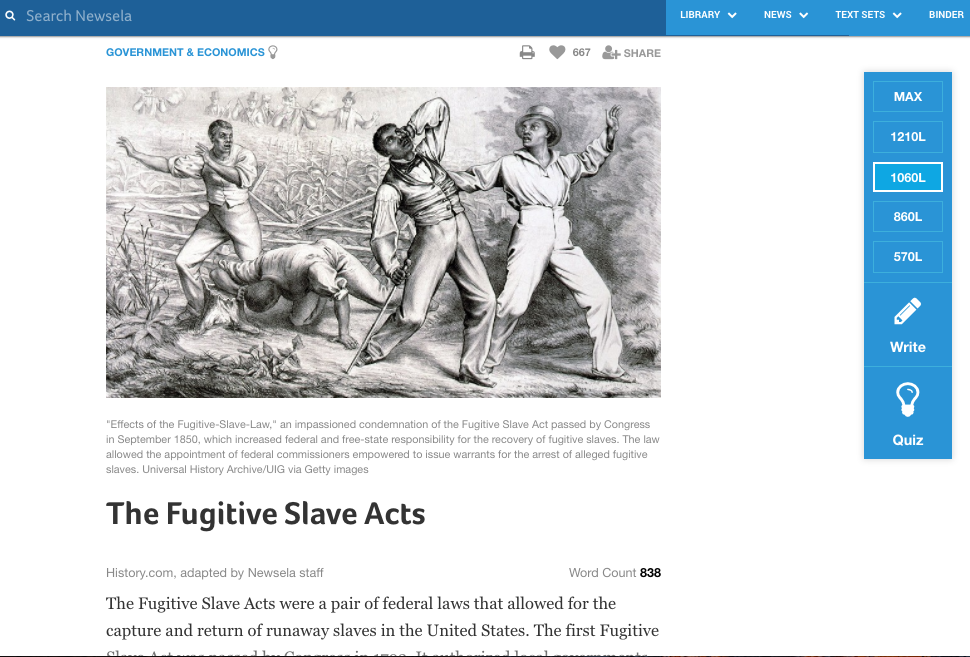
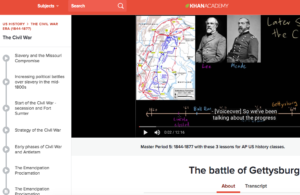
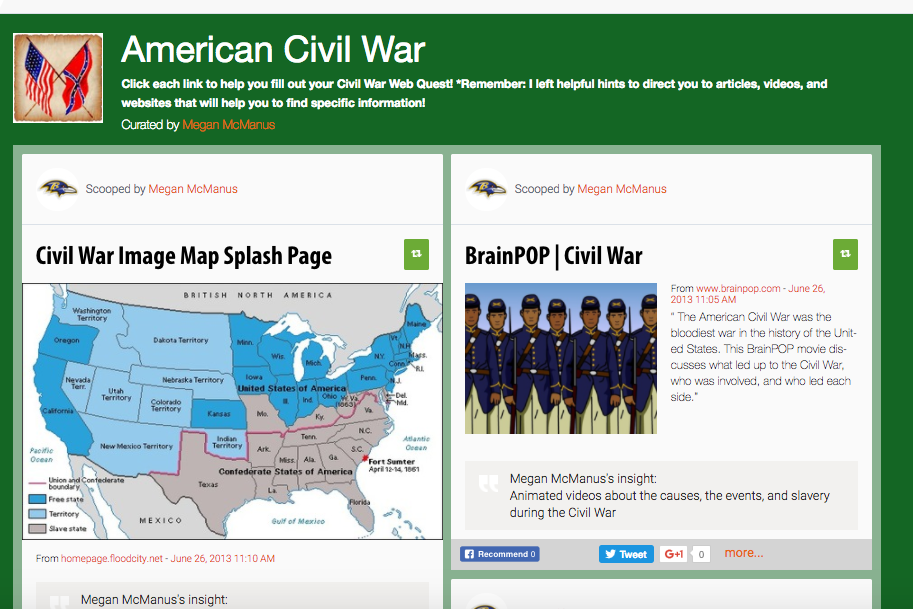
Nice blog author. Thank you. keep it up.
I don’t think the title of your article matches the content lol. Just kidding, mainly because I had some doubts after reading the article.